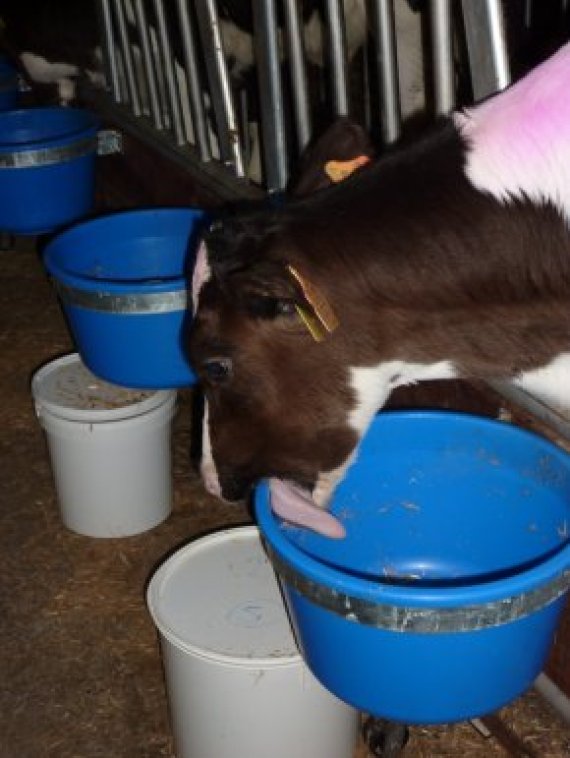Two weeks after their birth, the calves are transported from the dairy farm to the veal calf farmer, who delivers them to the slaughterhouse at the age of six months. The butchers prefer pale veal meat, because consumers value paler meat, and believe it is of a higher quality. For that reason, veal calves get an iron-poor liquid feed with little fibres. The main feed is milk replacer, supplemented with concentrates. The calves like milk in the first weeks, but later develop into ruminants. With little solid feed in their diet, they cannot perform their natural behaviours: chewing and ruminating. They will start chewing on nothing (sham chewing), tongue rolling inside and outside their mouth, and orally manipulating the pen structure, as a result of frustration. These behaviours are abnormal. Researcher Laura Webb fed calves on an experimental farm of Wageningen UR with four different diets during four months, with four different amounts of solid feed. Only calves that received the highest amount of solid feed showed less frustration, hence less abnormal behaviours, Webb concludes in this month’s issue of Applied Animal Behaviour Science. She also did a new test with another group of veal calves. These calves were allowed to choose their diet from an unlimited supply of milk replacer, concentrates, maize silage, hay and straw during the entire fattening period. This gave some interesting results. The calves consumed more milk replacer during the first few weeks than they normally get, but after that their consumption level stabilised at 10 to 13 litres of milk a day, and therefore was lower than what veal calves are normally fed. Instead, they started to consume more and more solid feed, mainly concentrates and hay, almost reaching 4 kg per calf per day in their last weeks before slaughter. This feeding behaviour is quite different from the actual feeding practice, where calves receive huge amounts of milk replacer – up to 30 litres – and little solid feed in their last weeks. According to Webb, the European legislation for veal calves feed should be reassessed. This directive states that calves of 8 weeks old should get 50 grams of solid feed to a minimum and calves of 20 weeks old should get 250 grams minimum. These minimum amounts should be increased for the sake of animal welfare, says Webb.
Veal calves need more solid feed
Veal calves are fattened on a diet comprising of a lot of milk replacer and limited amounts of fibrous feeds. They should get more solid feed to improve animal welfare, state Wageningen researchers.

